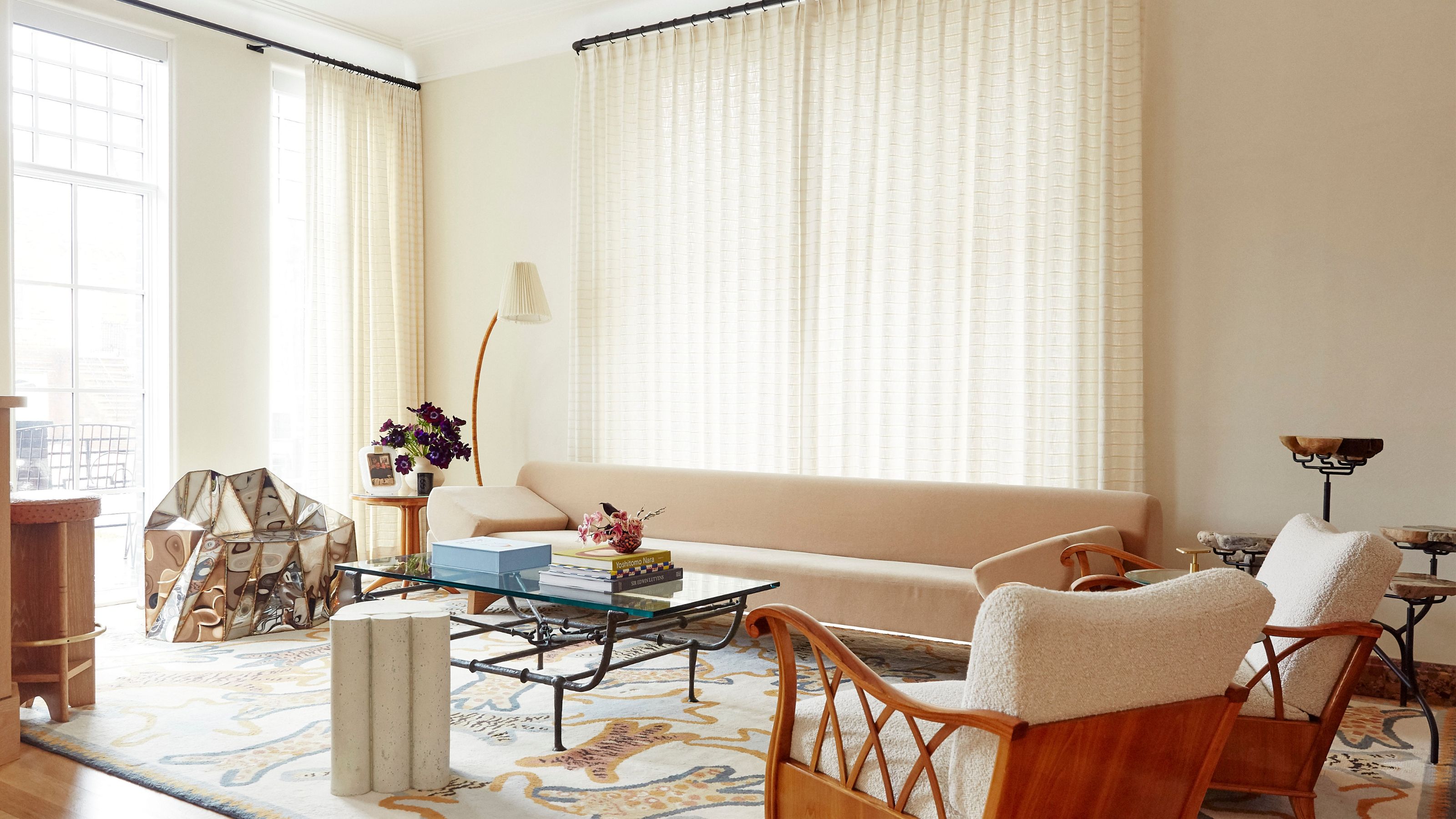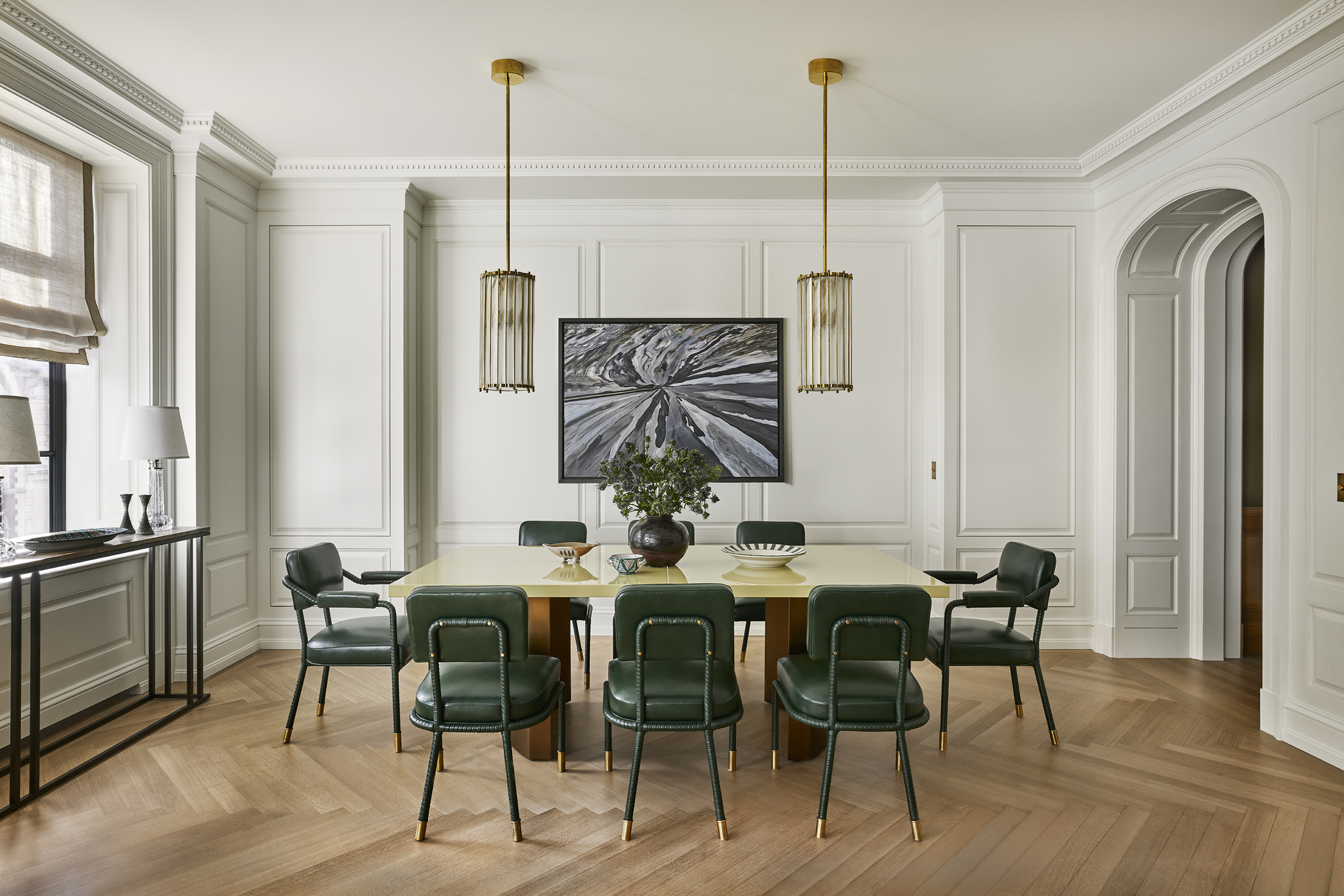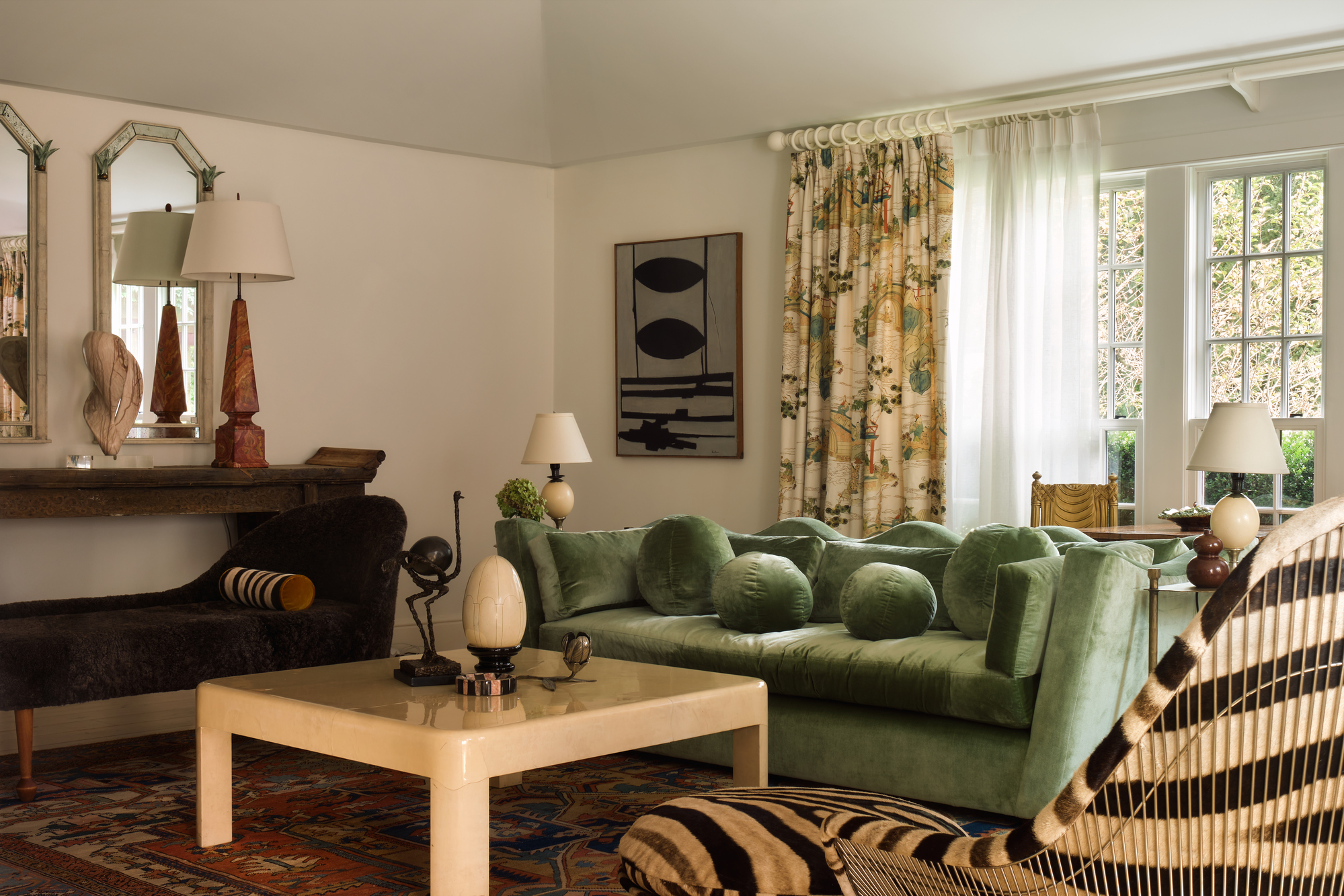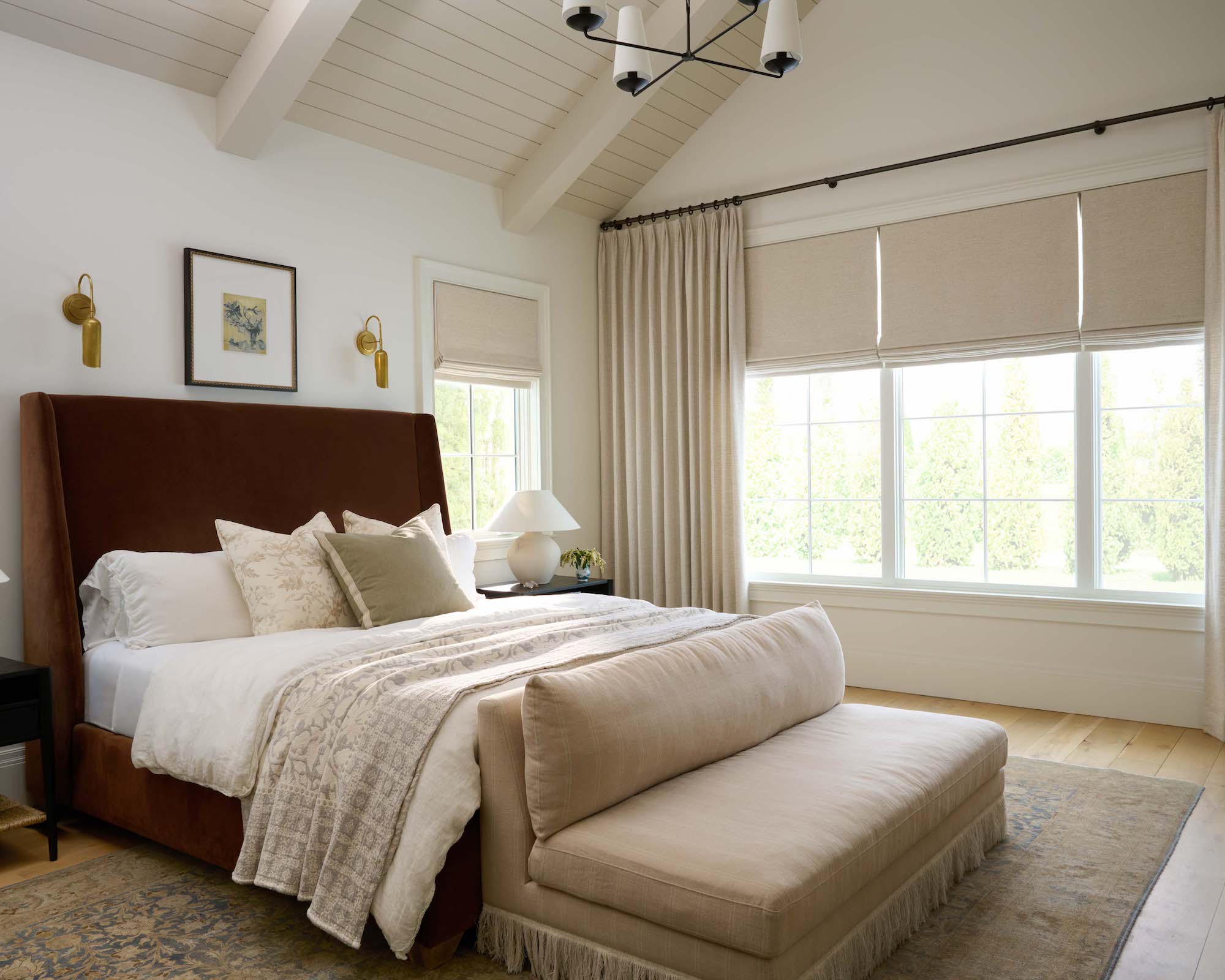"Should All My Window Treatments Match?" Here's How Designers Decide, and Make It Work Either Way
Matching window treatments throughout your home seems like the no-fail option, but the experts say that's not always the case


Cohesiveness is desirable in interiors, but to what extent? It’s an issue that often arises around window treatments since these are (typically) an essential for every room in the home, which raises the question: should all your window treatments match?
The designers’ verdict is nuanced. Sometimes, matching can be the right approach with modern window treatments, but only in specific circumstances. Otherwise, not matching is considered the better course of action. However, as you might well assume, cohesiveness between the different choices still remains important.
To further understand the niceties of matching or not matching your window treatments, and how to go about the latter successfully, I asked interior designers to share their expertise, which I've shared below.
When to Match All Your Window Treatments

Consistency can be a boon. “There are definitely times when matching window treatments throughout the home makes sense — especially in open-concept layouts, smaller spaces, or homes with a more minimalist or modern feel,” says Shea McGee of Studio McGee and McGee & Co.
Open-plan spaces and those with a restrained palette can benefit from matching, agrees Cate Gutter of CWG Design. But she adds, “While we rarely repeat window treatments across an entire home, if the right project called for it, we’d consider unlined linen panels or something equally soft and transitional. This works particularly well when windows align from room to room and the repetitive window treatment is a design foundation rather than a wow moment.”
Consistency in open-plan layouts can also benefit the exterior view. “Matching linings ensure your windows look just as considered from the street as they do inside,” adds John Smigielski, marketing and content director at British fabric house, Linwood.
And you might also choose to match your window treatments through a group of rooms. “In my own home, the kitchen, dining, and living areas all flow into one another, so I chose the same treatments throughout to create a visually clean and cohesive foundation,” says Shea. “By keeping the shell of the space consistent with paint and window treatments, I had more freedom to layer in personality through furniture, art, and accessories.”
The Livingetc newsletters are your inside source for what’s shaping interiors now - and what’s next. Discover trend forecasts, smart style ideas, and curated shopping inspiration that brings design to life. Subscribe today and stay ahead of the curve.
Shea McGee is chief creative officer of Studio McGee, which has garnered a reputation for creating beautifully balanced spaces that are both classic and current. Sister site McGee & Co features exclusive furniture pieces and styling accessories by Shea McGee and recently launched a collaboration with The Shade Store.
John Smigielski is marketing and content director at British fabric house Linwood, where he oversees the brand’s creative direction across print, digital, and social channels. With a background in interior journalism, he was formerly editor of 25 Beautiful Homes and later editorial director at a leading content agency. His work combines editorial flair with a sharp eye for design, making him a trusted voice in the interiors world.
When Not to Match All Your Window Treatments

While matching your window treatments suits some homes and design styles, there are often good reasons not to match. “Each space has its own light, mood, and function, and window treatments should match that rhythm,” says Cate Gutter.
“A bedroom might need blackout-lined Roman shades, while a breakfast nook begs for a sheer cafe curtain that lets the morning in," she continues. "Matching treatments in every room can dull the whole house’s personality. Worse, it can be impractical: what works in a cozy library might feel like overkill in a breezy sunroom.”
There are also other practical concerns that could be neglected through matching window treatments, especially with something like a bathroom curtain. “In areas such as bathrooms, a roller shade or wooden shutters will be more functional and durable over time,” notes interior designer Brianna Boidi of LDa Architecture & Interiors.
She points out that proximity to neighbors and public spaces is another reason to select different window treatments from room to room in order to safeguard privacy.
Consider, too, that as well as taking something away from the home as a whole, matching can detract from individual rooms. “Shifting textures and tone adds depth and individuality, giving every room a distinct, considered feel,” says John Smigielski.
Cate Gutter is owner and principal designer at CWG Design. Founded in 2020, CWG Design is sought after by discerning clientele nationwide who seek sophisticated interiors with a rich use of color, luxurious materials, and attention to functional details. Cate’s innate creative vision is deeply rooted in a legacy of design, raised in a family of design professionals. Her journey is shaped by numerous cross-country moves that have given her a unique appreciation for the essence of home — an ethos she passionately brings to every project.
Brianna Boidi is associate, interior designer at LDa Architecture & Interiors. As the daughter of a real estate agent and contractor, she has been passionate about design since a young age — a passion she has transformed into a successful career in interior design. Bri embraces a collaborative design process and believes in the importance of small details to really enhance a space and bring joy.
How to Style Mismatched Window Treatments

While you can use different window treatments throughout your home, it requires a considered approach. “The goal is to strike a balance between variety and cohesion,” says Shea McGee.
Layering window treatments is often for practical purposes (such as layering sheer and blackout curtains), but it can also serve as a style factor. Below, we've shared some considerations worth factoring in when styling mismatched window treatments in your home.
Apply consistent principles
While it’s not a matter of keeping everything the same, some commonality is required.
“If we’re doing drapery, they all kiss the floor the same way, whether they’re made of silk, linen, or anything in between,” says Cate Gutter.
And don’t forget the details. “Hardware stays cohesive,” adds Cate.
If you’re opting for custom window treatments, you might want to follow Cate’s lead here, too. “We use the same workroom across a project,” she says. “Maybe that sounds trivial, but like any artisan, each workroom has a signature. You can spot their flair in the details: a pleat, a hem, a fold.”
Mix type and style
Don’t shy away from using different types of blinds and curtains around the home, as well as on individual windows. “Mixing styles — like pairing woven Roman shades in the kitchen with linen drapes in the living room — adds richness and dimension to a home,” says Shea McGee. “Think of window treatments as if they’re another styling element.”
In doing so, it means the room leads the look for Cate Gutter. “Sometimes that means pairing wood blinds with relaxed linen curtains, and other times it’s silk panels with tassels,” she says.
Create cohesion through color and texture
Both color and texture are important factors, even though the window treatments don’t match. “Stick to a curated palette and complementary textures so the overall effect feels layered, not chaotic,” says Shea McGee.
John Smigielski agrees that keeping to a palette is advisable and, he suggests, “Repeat similar fabric types, like linen or velvet. Balance pattern with plain and varied textures thoughtfully to suit each space.”
Function comes first
Window treatment combinations should always follow function. “Let the purpose of the room guide the material and mechanics,” says Cate Gutter.
“Blackout shades belong in bedrooms and nurseries," she adds. "A gauzy curtain might be just the thing for a powder room. And something tailored and handsome in an office.”
For living room curtain ideas? “Lean into softer, more decorative options,” says Shea McGee.
Think of the view from outside
We mentioned the appearance of your home from the exterior with matching window treatments, but even when they don’t match, it's worth keeping in mind.
“Consider how your window treatments appear from the outside — especially on the front of the home,” says Shea McGee. “A consistent silhouette or neutral backing can help maintain curb appeal.”
You should also consider the backing’s relationship to the outside of the house. Just like you think about whether your curtains should match your wall color, think about how they'll sit next to your home's exterior.
“Use a consistent liner that plays nicely with the exterior,” says Cate Gutter. Or try this alternative. “Carry the face fabric around to the leading edge so you’re not left with a messy underbelly visible from the sidewalk,” she advises.
So, should all your window treatments match? It seems that not matching all your window treatment styles far more frequently proves the right choice rather than matching.
But think about this: can you skip window treatments altogether? You might be surprised by interior designers’ answers.

Sarah is a freelance journalist and editor. Previously Executive Editor of Ideal Home, she’s specialized in interiors, property and gardens for over 25 years. She’s written for websites including Houzz, Channel 4’s flagship website, 4Homes, and Future’s T3; national newspapers including The Guardian; and brands including Future’s Homes & Gardens, Country Homes & Interiors, Homebuilding & Renovating, and Period Living, as well as House Beautiful, Good Homes, Grand Designs, Homes & Antiques, and The English Home among others. It’s no big surprise that she likes to put what she writes about into practice, and is a serial house renovator.